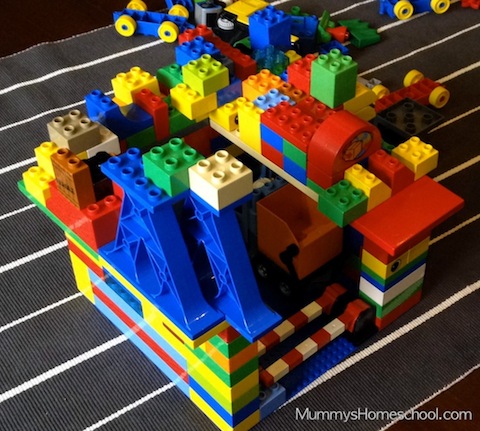I believe in the value of play and strongly guard my kids’ play time. How much play time? Lots and lots…
Play includes both structured and non-structured play.
Generally, structured play:
- is guided by the caregiver or instructor
- has specific learning objectives
Many Montessori activities (for e.g. Pink Tower, Knobbed Cylinders) and Shichida or right brain activities (e.g. photographic memory games, IQ blocks) would fall under structured or purposeful play. Card games (such as UNO), and board games (such as Monopoly) would count too.
To count as play, these activities must be freely chosen by the child. She’s happy to do them and not feel “forced”.
Advantages:
- Coverage of the curriculum is ensured.
- Children can gain specific vocabulary and skills.
- Areas of the curriculum, such as mathematics, need to be delivered sequentially in schools.
(Tassoni, 2006)
On the other hand, unstructured or free play:
- is unplanned
- is initiated by the child
- with rules or structure developed by the child
Examples are children playing freely with blocks, or leading their own play at the playground.
Advantages:
- Children can set their own goals.
- Children concentrate for longer periods when play is self chosen.
- Children are more likely to be creative.
- Child-initiated activities are less pressurised as the child is responsible.
- Children learn how to choose.
- Children can gain in confidence by being self-reliant.
- Children can repeat activities until they feel they have mastered them.
(Tassoni, 2006)
So how much do my kids play?
To get all the advantages above (kiasu, right?), I simply ensure that they get both forms of play every weekday.
Jae (3 years 3 months old):
- structured play: up to 1.5 hours per day, on Montessori and right brain learning activities of his choice. He isn’t doing written work yet.
- free play: almost all the rest of his waking hours. Ha!
Vee (almost 6 years old):
- structured play: 1 hour a day at home, when we do learning through play (His current favourite is Snake & Ladder board game, where he can practice mental calculations.) He gets to play a bit in kindy too.
- free play: 2 to 3 hours per day. Usually building freely with various types of blocks and construction toys, and playing with Jae.
Oops, did I miss out little El? I “may” do up to 30 minutes of guided activities with him. Often, he just hangs around us and we try to involve him a bit here and there. I leave toddler activities on shelves and around the house for him to help himself. Otherwise, he happily enjoys climbing everywhere.
In the mornings, the older boys wake up earlier than me, so that’s a sure way of playing freely without adult-intervention (that is, until they start fighting and screaming).
Every evening, I set aside 1.5 hours of play time, preferably outdoors for exercise or sensory play.
Rain or shine, play is compulsory for my kids. 🙂
—
For more related articles on play, read:
- The Impoverishing Effects of Academic Excellence by Dr. Petunia Lee
- Advantages and disadvantages of structured and unstructured play
- Additional information on play
—
References:
- BTEC National Early Years 2nd Edition, edited by Penny Tassoni, Heinemann Educational Publishers, 2006, table on page 375

